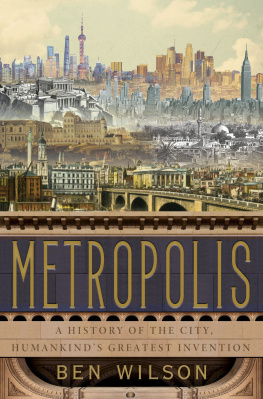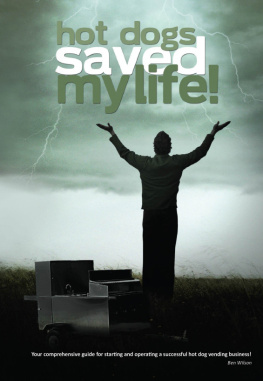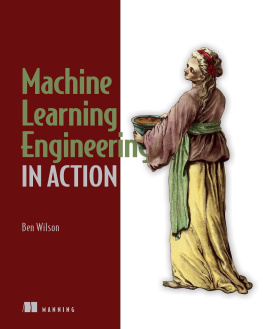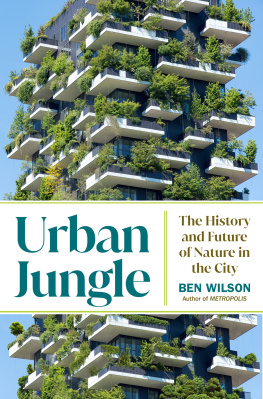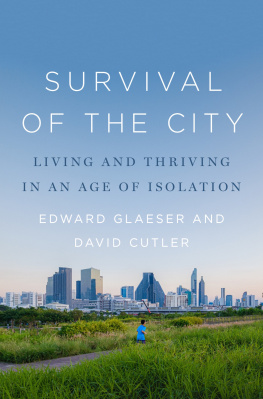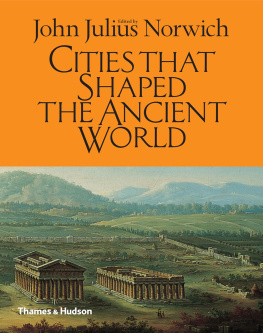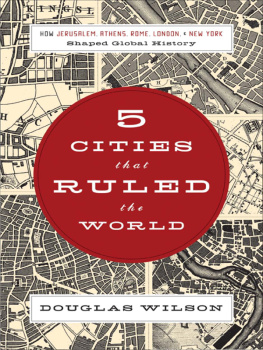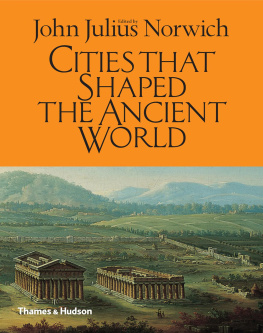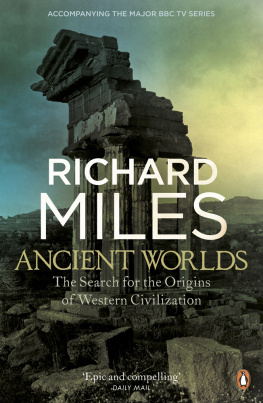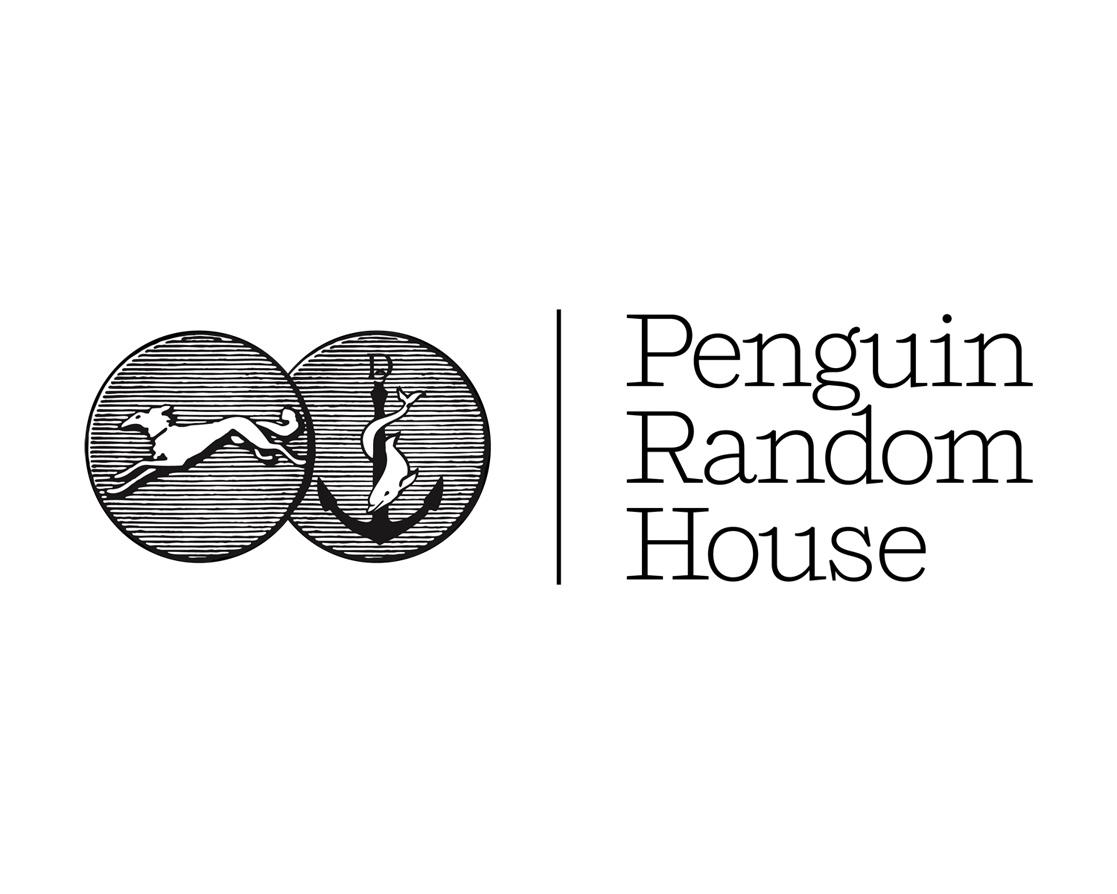Ben Wilson has an undergraduate and masters degree in history from Cambridge. He is the author of five previous books, including What Price Liberty?, for which he received the Somerset Maugham Award, and the Sunday Times bestseller Empire of the Deep: The Rise and Fall of the British Navy. He has consulted for various TV history programs and appeared on TV and on national radio in the United States, United Kingdom, and Ireland. He has written for The Spectator, The Literary Review, The Independent on Sunday, The Scotsman, Mens Health, The Guardian Online, and GQ.
INTRODUCTION
THE METROPOLITAN CENTURY
Today the worlds urban population grew by close to 200,000 people. It will do the same tomorrow, and the next day, and so on into the future. Two-thirds of humanity will live in cities by 2050. We are witnessing the greatest migration of history, the culmination of a 6,000-year process whereby we will have become an urbanised species by the end of the present century.
How and where we live is one of the most important questions we can ask ourselves. Much of what we understand about history and about our own times flows from exploring that subject. Since the first urban settlements in Mesopotamia around 4000 BC , cities have acted as gigantic information exchanges; the dynamic interaction of people in the dense, cramped metropolis has generated the ideas and techniques, revolutions and innovations that have driven history. Until the year 1800 no more than 35% of the global population lived in sizeable urban areas; but this tiny minority had a disproportionate effect on global development. Cities have always been humankinds laboratories, the forcing houses of history. Drawn by the magnetic power of the citylike so many millions every single weekI began researching and writing Metropolis with this premise: that our past and our future are bound up, for good and ill, with the city.
I plunged into this vast, multifaceted, perplexing subject at a time of both spectacular urban renaissance and unprecedented challenges to the urban fabric. At the beginning of the twentieth century the traditional city was a place of pessimism not hope; the devouring industrial metropolis imprisoned its people, poisoning their bodies and minds; it was bringing about social breakdown. In the second half of the twentieth century the response to the horrors of industrialisation was in full swing: we seemed to be in a process of dispersal rather than concentration. Major global metropolises such as New York and London experienced population decline. Cars, telephones, cheap air travel, the frictionless flows of capital around the planet, and, latterly, the Internet allowed us to spread out, undoing the traditional cramped, intense city centre. Who needed urban social networks when you had limitless virtual social networks? Downtownwhich was in any case suffering from crime waves and physical dilapidationwas being replaced by suburban business parks, campuses, home offices and out-of-town shopping centres. The closing years of the last century and the first decades of this millennium, however, upended those predictions.
Most notably in China, a series of ancient citiesand some brand-new onesroared into life, fuelled by 440 million rural-to-urban migrants in three decades and crowned by an orgy of skyscraper construction. Across the world, cities reclaimed their central economic position. Rather than facilitating dispersal, the knowledge economy and superfast communications encourage large companies, small businesses, start-ups and freelance creative workers to swarm like bees in a hive. Technological, artistic and financial innovations occur when experts cluster: humans thrive when they share knowledge, collaborate and compete in face-to-face settingsand in particular in places that facilitate information flows. Where once cities tried to woo big manufacturing plants or capture a share of world trade, they now compete for brains.
The dependence on human capital and the economic benefits of urban density in post-industrial societies are remaking the modern metropolis. Successful cities transform entire economiesas the much-envied, urban-led growth of China shows. Every time an area doubles in population density it becomes 25% more productive: the energies contained in cities make us collectively more competitive and entrepreneurial. That force is magnified not just by density but by size as well.
One of the major changes that has assailed the planet in the last three decades is the startling way in which major metropolises are pulling away from their countries. The global economy is skewed towards a few cities and city-regions: by 2025, 440 cities with a collective population of 600 million (7% of all people) will account for half of worldwide gross domestic product. Single cities in many emerging markets such as So Paulo, Lagos, Moscow and Johannesburg on their own produce between a third and half of their nations wealth. Lagos, with 10% of Nigerias population, accounts for 60% of the nations industrial and commercial activities; if it declared independence and became a city state, it would be the fifth richest country in Africa. In China, 40% of the countrys entire economic output is generated by just three megacity regions. This is not a new phenomenon. In fact, we are seeing a return to a situation common for most of historythe outsized role of the superstar city in human affairs. In ancient Mesopotamia or Mesoamerica before Columbus, during the rise of the Greek polis or the heyday of the medieval city state, a select group of metropolises monopolised trade and outcompeted mere nation states.
Throughout history, this divergence of major cities and countries has not just been economic. Their turbocharged success means they suck in talent and wealth from less favoured towns and regions; they dominate culture; and, like historical cities, they are more than ever characterised by a diversity not matched elsewhere. The proportion of foreign-born residents in some of todays most powerful metropolises is between 35% and 50%. Younger, better educated, richer and more multicultural than their national populations, global cities have more in common with each other. In many modern societies the deepest divide is not age, race, class or urban versus rural: it is between big metropolises and the villages, suburbs, towns and cities that have been left behind in the globalised knowledge economy. In some senses the word metropolitan connotes glamour and opportunity; but it is also shorthand for a kind of elitismpolitical, cultural and socialthat is increasingly resented. Hatred for the big city is not new, of course; we have spent a lot of our history worrying about the corrosive effect of the metropolis on our morals and mental health.

